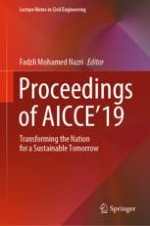2020 | OriginalPaper | Chapter
Pedestrian Walkability Index for Light Rail Transit (LRT) Stations in Klang Valley, Malaysia
Authors : Steuart Jia Yun Chin, Boon Hoe Goh, Fang Yenn Teo, Byung Gyoo Kang, Choon Wah Yuen
Published in: Proceedings of AICCE'19
Publisher: Springer International Publishing
Activate our intelligent search to find suitable subject content or patents.
Select sections of text to find matching patents with Artificial Intelligence. powered by
Select sections of text to find additional relevant content using AI-assisted search. powered by
